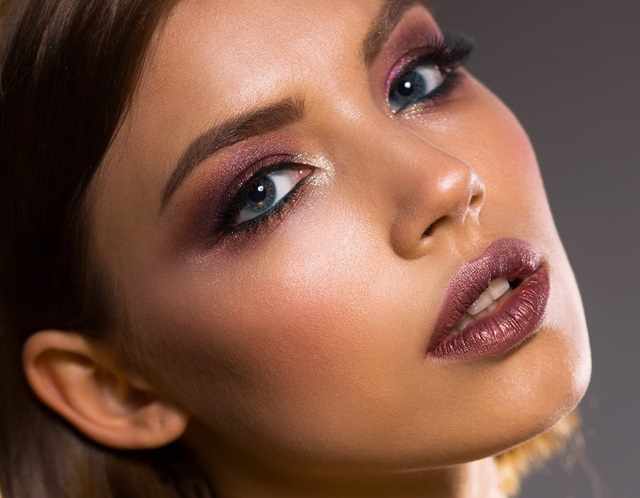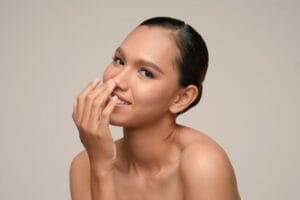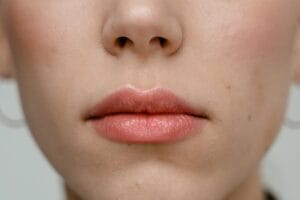Rhinoplasty Guide: What to Expect from Nose Surgery
Question: What is rhinoplasty?
Answer: Rhinoplasty is a surgical procedure that reshapes the nose by modifying bone, cartilage, and skin. It can improve appearance (cosmetic rhinoplasty) or enhance breathing function (functional rhinoplasty). The procedure typically takes 1-3 hours under anesthesia, with recovery involving swelling and bruising that gradually subsides over several months to a year.
Sarah had been self-conscious about her nose since high school. It wasn’t that anything was dramatically wrong—the bridge had a slight hump, and the tip was a bit more prominent than she’d like. But every time she looked in the mirror, that’s what she noticed first. After years of considering it, she finally scheduled a consultation with a board-certified plastic surgeon. Three months post-surgery, she’s still getting used to seeing her reflection, but in the best way possible.
Rhinoplasty, commonly called a nose job, is one of the most popular cosmetic procedures worldwide—and for good reason. The nose sits right in the center of your face, which means even small changes can dramatically affect how you perceive yourself and how others see you. But here’s the thing: rhinoplasty isn’t just about aesthetics. Many people don’t realize that this procedure can also improve breathing function, correct structural issues from injuries or birth defects, and even help with chronic sinus problems.
If you’re considering rhinoplasty, you’ve probably found yourself scrolling through before-and-after photos, wondering whether you’re a good candidate, worrying about the recovery process, and questioning whether the results will be worth it. Let’s walk through everything you need to know—the procedure itself, what to expect during recovery, potential risks and benefits, and how to choose the right surgeon.
What Is Rhinoplasty? Understanding the Basics
At its core, rhinoplasty is a surgical procedure designed to reshape the nose. Surgeons can modify bone, cartilage, and skin to alter the nose’s size, shape, or proportions. The goal might be purely cosmetic—maybe you want to reduce a bump on the bridge, refine the tip, or straighten a crooked nose. Or it could be functional—perhaps you have a deviated septum making it hard to breathe, or structural damage from an old injury that’s causing problems.
The procedure itself typically takes one to three hours, depending on the complexity. Most rhinoplasties are performed under general anesthesia, though some surgeons offer local anesthesia with sedation for simpler cases. Your surgeon will make incisions—either inside the nostrils (closed rhinoplasty) or across the columella, the narrow strip of tissue between the nostrils (open rhinoplasty). Open rhinoplasty gives the surgeon better visibility and control, which is why it’s preferred for more complex cases. Closed rhinoplasty leaves no external scarring, which some patients prefer, though it limits what the surgeon can see and modify.
From there, the surgeon carefully reshapes the underlying bone and cartilage framework, then redrapes the skin over the new structure. Think of it like remodeling a house—you’re changing the foundation and frame, but the exterior needs to sit naturally on top. That’s why results continue to evolve as swelling subsides over months, sometimes even up to a year.
Types of Rhinoplasty Procedures
Not every rhinoplasty is the same. The approach your surgeon takes depends on what you’re trying to achieve, your anatomy, and their training and preferences. Understanding the different types helps you have more informed conversations during consultations.
Primary Rhinoplasty
This is your first rhinoplasty—the initial procedure. Primary rhinoplasties generally have more predictable outcomes because the nasal structures haven’t been altered yet. The surgeon is working with virgin tissue, which means less scarring, better healing potential, and more flexibility in reshaping. Most cosmetic rhinoplasties fall into this category.
Revision Rhinoplasty
Sometimes called secondary rhinoplasty, this procedure addresses issues from a previous nose surgery. Maybe the first procedure didn’t achieve the desired aesthetic result, or breathing problems developed afterward, or the nose has changed over time in ways you didn’t expect. Revision rhinoplasty is technically more challenging because the surgeon is working with already-modified structures, scar tissue, and potentially limited cartilage supply for grafting. That said, experienced surgeons can often achieve excellent results even in revision cases.
For more detailed information about revision rhinoplasty procedures, visit our dedicated guide.
Functional Rhinoplasty
When the primary goal is improving breathing rather than changing appearance, that’s functional rhinoplasty. These procedures often involve straightening a deviated septum, removing nasal polyps, or widening nasal passages. Insurance might cover functional rhinoplasty if it’s deemed medically necessary, whereas purely cosmetic procedures are typically out-of-pocket. Some procedures combine both—correcting breathing issues while also refining the nose’s appearance.
Learn more about deviated septum correction and functional improvements.
Ethnic Rhinoplasty
Some surgeons specialize in ethnic rhinoplasty, which considers how rhinoplasty techniques need to be adapted for different ethnic backgrounds. The goal is enhancing the nose while preserving ethnic characteristics and maintaining harmony with other facial features. This requires understanding how different nose structures vary across populations and tailoring techniques accordingly.
Who Is a Good Candidate for Rhinoplasty?
This is where things get interesting—and where many people get tripped up. Being a good candidate isn’t just about wanting a different nose. Several factors matter.
First, your nose should be fully developed. For most people, that means waiting until at least your late teens, though some surgeons prefer patients to be in their early twenties. The cartilage in your nose needs to be mature enough that further growth won’t undo surgical changes. If you’re too young, continuing growth could distort results.
Your overall health matters too. Rhinoplasty is surgery, which means you need to be healthy enough to handle anesthesia and heal properly. If you have uncontrolled medical conditions—heart problems, bleeding disorders, certain autoimmune conditions—your surgeon might advise against it or recommend additional precautions. Smoking significantly impacts healing, so most surgeons require patients to quit smoking well before surgery and remain smoke-free during recovery.
Realistic expectations are crucial. Rhinoplasty can create beautiful improvements, but it won’t transform you into a completely different person, and it can’t solve deeper self-esteem issues. If you’re looking to surgery to fix problems in your life that aren’t actually related to your nose, that’s a red flag. Good surgeons will address this during consultation.
Also, consider timing. Recovery from rhinoplasty involves visible bruising and swelling for at least a couple weeks. If you have major events coming up—a wedding, job interview, important presentation—you’ll want to plan surgery with enough recovery time before those dates.
Perhaps most importantly, you need to find the right surgeon. Board certification in plastic surgery or facial plastic surgery, extensive rhinoplasty experience, and a portfolio of results that align with your aesthetic goals all matter enormously. This isn’t a procedure to shop based on price alone.
The Rhinoplasty Procedure: Step by Step
Understanding what actually happens during surgery can help ease anxiety and set proper expectations. Here’s a typical timeline.
Pre-Surgery Preparation
In the weeks before surgery, you’ll have detailed consultations with your surgeon. They’ll examine your nose from multiple angles, take photographs for planning and documentation, discuss your goals, and explain what’s realistic for your anatomy. Some surgeons use computer imaging to show potential results, though these are estimates—actual outcomes can differ.
You’ll get pre-operative instructions: which medications to avoid (aspirin, ibuprofen, and other blood thinners), dietary restrictions before anesthesia, and when to stop eating and drinking. Arrange for someone to drive you home and stay with you for at least the first night.
Day of Surgery
You’ll arrive at the surgical facility early. The medical team reviews everything one more time, marks your nose for precise planning, and administers anesthesia. Once you’re under, the actual work begins. Your surgeon makes the planned incisions, then carefully works on reshaping the underlying structures. They might trim cartilage, add cartilage grafts taken from your septum or ear, file down bone, or reposition tissue—all with precision and an eye toward both aesthetic goals and maintaining or improving function.
Closing and Recovery Room
Once reshaping is complete, the surgeon closes incisions with sutures. You’ll have a splint on the outside of your nose and packing or splints inside the nostrils to support the new shape and control bleeding. You’ll wake up in the recovery room, probably groggy and with your nose feeling stuffy and sore.
Most rhinoplasties are outpatient procedures, meaning you go home the same day. Someone needs to drive you—you won’t be able to drive yourself after anesthesia. Plan to rest with your head elevated for the first few days, which helps reduce swelling.
Rhinoplasty Recovery: What to Expect
Recovery is where patience becomes critical. Your nose will look very different in the first few days than it will after healing, which can be alarming if you’re not prepared.
For a detailed rhinoplasty recovery timeline, check out our comprehensive day-by-day guide.
The First Week
The first 48 to 72 hours are typically the most uncomfortable. You’ll have swelling, bruising around your eyes (which can get pretty dramatic), nasal congestion, and some discomfort. Pain is usually manageable with prescribed medication. Keeping your head elevated, even while sleeping, helps minimize swelling. Cold compresses around the eyes (not directly on the nose) can help with bruising.
You’ll probably have packing or splints inside your nose, which can make breathing feel restricted. Mouth breathing becomes necessary during this time. By the end of the first week, your surgeon will remove external sutures and the nasal splint. This is often the first time you’ll see your new nose shape, though it will still be quite swollen.
Weeks Two to Four
Bruising should fade significantly, and most swelling will decrease, though your nose will still look larger than the final result. You can usually return to work or normal activities by week two, though you’ll still want to avoid anything strenuous. No exercise that raises your blood pressure or risks of impact to your face. Your surgeon will clear you for specific activities gradually.
Some patients experience numbness in the tip of the nose, which is normal and typically resolves over time. The skin is adjusting to the new underlying structure, which takes time.
Months Two to Six
Swelling continues to decrease, though it happens slowly and subtly. You’ll notice your nose becoming more defined. The tip often takes longest to refine—there’s a lot of swelling in that area. Many patients see about 70 to 80 percent of their final result by three months.
Six Months to One Year
This is when you really see the final result. Residual swelling, especially in the tip and around the nostrils, continues to settle. Your nose should look natural and integrated with your face. Some minor changes can continue for up to a year or even longer in some cases.
The key is patience. Comparing your nose at one month to before-and-after photos online isn’t fair—those photos are typically taken months or years after surgery when all swelling has resolved.
Potential Risks and Complications
No surgery is risk-free, and rhinoplasty is no exception. Being aware of potential complications helps you make an informed decision and recognize when something needs medical attention.
Common but Manageable Issues
Some bleeding is normal immediately after surgery, but excessive bleeding is concerning and requires immediate contact with your surgeon. Infection is possible with any surgery, though proper care and antibiotics reduce the risk significantly. Asymmetry can occur—no nose is perfectly symmetric, but sometimes surgical changes create more asymmetry than intended.
Scarring is inevitable with any incision, but most rhinoplasty scars are hidden inside the nostrils or along natural creases. In open rhinoplasty, the small scar on the columella usually heals well and becomes barely visible over time.
More Serious Complications
Rarely, patients develop breathing problems after rhinoplasty if the airways are narrowed too much during surgery. This might require revision. Some people experience changes in skin sensation, which usually improves but can be permanent in small areas. Septal perforation—a hole forming in the septum—is possible if there’s trauma to that area.
Perhaps the most common serious issue is being unhappy with results. This could mean the nose doesn’t look how you envisioned, or results change in ways you didn’t expect as healing progresses. Revision surgery might be an option, but it’s more complex and costly than primary rhinoplasty.
Minimizing Risks
Choosing a qualified, experienced surgeon is the single most important factor in reducing complications. Following all pre- and post-operative instructions meticulously also matters enormously. Don’t skip follow-up appointments, even if everything seems fine. Your surgeon needs to monitor healing and catch any issues early.
Benefits of Rhinoplasty: Beyond Aesthetics
While most people think of rhinoplasty in purely cosmetic terms, the benefits often extend beyond appearance.
Improved Self-Confidence
This might sound superficial, but feeling better about how you look genuinely impacts quality of life. When you’re not constantly worrying about your nose or feeling self-conscious, you can focus on other things. Many patients report feeling more confident in social situations, professional settings, and even relationships after rhinoplasty.
Better Breathing
If you had functional issues—deviated septum, narrow airways, structural problems from injury—rhinoplasty can dramatically improve breathing. You might notice you sleep better, exercise feels easier, and you’re less prone to sinus infections. These functional improvements can be life-changing.
Corrected Structural Issues
For people with noses damaged by injury or birth defects, rhinoplasty can restore both appearance and function. Reconstructive aspects of the procedure can address issues that have been problematic for years or decades.
Facial Harmony
The nose is central to facial balance. When it’s out of proportion—too large, too small, crooked, or misshapen—it can throw off the whole face. A well-executed rhinoplasty creates better harmony, making all your features work together more naturally.
Choosing the Right Rhinoplasty Surgeon
This decision is arguably more important than any other factor in your rhinoplasty journey. The wrong surgeon can create problems that are difficult or impossible to fix. The right one can deliver results that exceed expectations.
For comprehensive guidance, see our article on choosing a plastic surgeon.
Credentials and Certification
Look for board certification in either plastic surgery or facial plastic surgery. Both are legitimate paths for rhinoplasty specialists. Certification means the surgeon has completed rigorous training and passed comprehensive exams. Don’t assume any cosmetic surgeon is qualified—some practitioners perform rhinoplasty without proper training, which is risky.
Experience Matters
Rhinoplasty is technically demanding. Ask how many rhinoplasties the surgeon performs per year—you want someone doing this regularly, not occasionally. Ask about their revision rate—every surgeon has some, but unusually high rates might indicate problems. Request to see before-and-after photos of patients with similar anatomy and goals to yours.
Consultation Quality
During consultation, you should feel heard. A good surgeon listens to your goals, examines your anatomy thoroughly, explains what’s realistic, and discusses risks openly. They should show you examples of their work and explain their approach. If you feel rushed, dismissed, or pressured, that’s a red flag.
Trust and Communication
You need to trust your surgeon and feel comfortable communicating with them. If something feels off—maybe they’re dismissive of your concerns, pushy about scheduling, or can’t clearly explain their approach—keep looking. This is your face and your health. Don’t compromise.
Realistic Expectations
Good surgeons will tell you when something isn’t possible or advisable, even if it means you might not choose them. Beware of surgeons who promise perfection or guarantee specific outcomes. Rhinoplasty is an art and a science, but it’s not magic. Results depend on your anatomy, healing, and surgical skill—all of which have limits.
Cost Considerations and Insurance
Rhinoplasty costs vary widely depending on geographic location, surgeon experience, facility fees, anesthesia, and procedure complexity. Cosmetic rhinoplasty typically costs anywhere from $5,000 to $15,000 or more. Revision rhinoplasty usually costs more than primary procedures.
Most insurance plans don’t cover purely cosmetic rhinoplasty. However, if the procedure addresses functional issues like a deviated septum or breathing problems, insurance might cover part or all of it. You’ll need documentation of the medical necessity and prior authorization. Check with your insurance company before scheduling surgery to understand coverage.
For a detailed breakdown, see our guide on rhinoplasty cost and financing.
Factor in all costs: surgeon fees, facility fees, anesthesia, pre-operative tests, post-operative medications, and any potential revision surgery. Don’t choose based on price alone—quality and safety matter more than cost.
Life After Rhinoplasty: Long-Term Considerations
Once you’ve healed and you’re happy with your results, rhinoplasty is generally permanent. Cartilage and bone changes don’t reverse on their own, though the nose continues to age naturally like the rest of your face.
Some patients worry about impact—can you ever break your nose again? Technically yes, though the surgical modifications are typically stable. Avoid contact sports or activities with high facial impact risk, especially in the first year while everything is fully healing.
Touch-up procedures are sometimes an option if minor adjustments are needed after healing, though major changes would require revision rhinoplasty.
Final Thoughts
Rhinoplasty can be transformative, both aesthetically and functionally. For the right candidates with realistic expectations and an experienced surgeon, results can be life-changing in the best way. But it’s not a decision to make lightly. The procedure involves real risks, significant recovery time, and permanent changes to your appearance.
Take your time researching, consult with multiple surgeons if needed, and make sure you’re doing this for yourself, not to meet someone else’s expectations. Ask questions, understand the process, and trust your instincts about which surgeon feels right.
If you’re considering rhinoplasty, start with thorough research and consultations. Understanding what’s involved, what to expect, and what’s realistic for your situation is the foundation for making the best decision. The results can be worth it—but only if you’re prepared for the journey.













